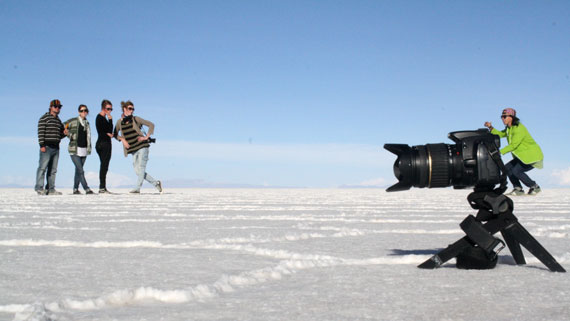In the dynamic and expressive realm of photography, perspective holds the power to transform the mundane into the extraordinary. It enables photographers to manipulate spatial dimensions, bring new meanings to subjects, and create uniquely compelling narratives. But what exactly is perspective, and how does it interact with the intriguing concept of forced perspective? Let’s delve into these fascinating areas of photography composition.
Understanding Perspective in Photography
The term “perspective” in photography refers to the representation of three-dimensional space on a two-dimensional plane (i.e., the photo) in a way that replicates human vision. Perspective is determined by the relationship between the camera and the subject.
In a nutshell, perspective can change how objects relate to each other within the frame, both in terms of size and spatial relationship. You can capture different perspectives by changing your camera’s position, angle, or focal length. There are a few common types of perspectives to consider:
- Linear Perspective: This is observed when parallel lines appear to converge as they recede into the distance, creating a sense of depth.
- Aerial Perspective: Also known as atmospheric perspective, this technique involves capturing the natural haze and color shifting in the atmosphere to suggest distance.
- Vertical Perspective: This is the perception of depth and size based on an object’s height in the frame. Objects lower in the frame appear closer than objects higher in the frame.
The Art of Forced Perspective
Forced perspective is a clever technique where photographers use optical illusions to make an object appear larger, smaller, closer, or further away than it actually is. This is achieved by manipulating the spatial relationships of the objects within the frame, often using depth of field and positioning to play tricks on the viewer’s perception.
A common example of forced perspective is the classic “holding up the Leaning Tower of Pisa” tourist photo. Even though we logically know the person isn’t actually holding up the tower, the photographer’s careful alignment creates the illusion that they are.

Techniques for Creating Forced Perspective
Creating effective forced perspective images requires a deep understanding of spatial relationships and some creativity. Here are a few techniques:
- Object Placement: Place your subjects at varying distances from the camera to manipulate their size relationship.
- Camera Angle: Low or high angles can exaggerate the size and importance of a subject.
- Depth of Field: Use a wide depth of field to keep both foreground and background objects in focus, emphasizing the illusion.
- Lens Choice: A wide-angle lens can enhance the sense of distance or size disparity between objects.
- Lighting: Use light and shadow to emphasize depth and spatial relationships.
The Impact on Composition
Both perspective and forced perspective significantly affect the composition of your images. They can help guide the viewer’s eye, create a sense of depth and scale, emphasize certain subjects, and create intriguing visual narratives.
For example, a low perspective can make a subject appear dominant and powerful, while a high perspective can make it appear small or insignificant. Forced perspective can tell playful stories or make the viewer question their perception of reality.
In conclusion, mastering perspective and forced perspective allows photographers to fully exploit spatial relationships and depth, adding layers of meaning and interest to their compositions. So next time you’re out with your camera, experiment with these techniques and see how they transform your images and the stories they tell.
For Further Training on Composition:
Are you ever tired of your photos looking dull or boring? These new Composition Cheat Sheets have you covered. With clear, concise information on all the essential elements of composition, you’ll never be unprepared again. They are currently 81% off for the launch sale which ends soon if you want to check them out.
The perfect companion for any photographer. Print one out whenever you need it. These cheat sheets consolidate crucial composition-related information, allowing you to concentrate on what truly matters – composing striking photographs.
Launch sale ending soon: The Composition Cheat Sheets at 81% Off
- - - - - - - - - - - - - - - - - - - - - - - - - - - - - - - - - - - - - - - - - - - - - - - - - - - - - - - - - - - - - - - - - - - - - - - - - -
Did you appreciate this newsletter? Please help us keep it going by Joining Our Patreon Supporters
What are your thoughts on this article? Join the discussion on our Facebook Page
PictureCorrect subscribers can also learn more today with our #1 bestseller: The Photography Tutorial eBook
- - - - - - - - - - - - - - - - - - - - - - - - - - - - - - - - - - - - - - - - - - - - - - - - - - - - - - - - - - - - - - - - - - - - - - - - - -
The post Perspective and Forced Perspective in Composition appeared first on PictureCorrect.
from PictureCorrect https://ift.tt/1UJz5pX
via IFTTT








0 kommenttia:
Lähetä kommentti